Japan: Proof and BU Mint Sets Include Commemorative Medals Featuring Akasaka Palace
The Mint of Japan release collector sets which marks the 50th Anniversary of Akasaka Palace Guest House.
On the 11th April this year, The Akasaka Palace celebrated its transition from an Imperial residence to a formal Guest House. Originally built between 1899 and 1909, it was specially designated as the official home for the then-Crown Prince Yoshihito who would become Emperor of Japan in 1912, reigning until 1926. Built in the Neo-Baroque style prevalent in the West, the Palace was meant to resemble the Hofburg Palace, home of the Austrian Emperor in Vienna. Akasaka, originally named Tōgū Palace, meaning ‘Palace of the Crown Prince’ became one of largest buildings constructed during the Meiji-era period from 1867 to 1912. The Palace was designed and constructed under the supervision of architect Katayama Tōkuma who studied under the British architect Josiah Conder at London’s Imperial College of Engineering. Ultimately, the project was designed to showcase Japan's adoption of Western architectural styles while retaining elements of traditional Japanese aesthetics.
With the death of Emperor Yoshihito in 1926, the Crown Prince Hirohito became Emperor, who had resided in the Tōgū Palace since 1923. As the Palace now housed the Emperor, it was renamed Akasaka in reference to the property’s former owners, the Tokugawa family who ruled Japan during the Edo period. The Palace was last used as an imperial residence in 1928 when Emperor Hirohito relocated his family and court to what became known as the Imperial Palace, current residence of Japan’s Emperor. From this time until the end of the Second World War, the building was mostly unoccupied. After the War, the Government of Japan relieved the Imperial Household of Akasaka Palace and several governmental offices were installed in the palace, including the National Diet Library which was founded in 1948. Other government offices such as the Cabinet Legislation Bureau were resident and during the 1960’s, the Organizing Committee of Tokyo Olympics 1964 was located in Akasaka. It was during this decade that the Government decided the Palace should be completely renovated and re-purposed as a State Guest House to accommodate visiting dignitaries. Work began in 1969 under the supervision of architect Togo Murano and was completed in 1974, in time to welcome its first official guest, United States President Gerald R Ford, the first serving American President to visit Japan. Since then, Akasaka has provided accommodations for state and official guests and a venue for international conferences, which have included the G7 summit meetings of 1979, 1986 and 1993 as well as APEC summits. The Palace was closed from 2006 to 2009 for additional renovation, and was reopened in April 2009, in time for the main building, the main gate and the garden with fountain to be designated as a National Treasure of Japan. Akasaka Palace was the first designation of assets after the Meiji Restoration to be included as a National Treasure of Japan. Akasaka is also one of Japan's most popular tourist attractions, offering guided tours of the Palace itself and extensive grounds.
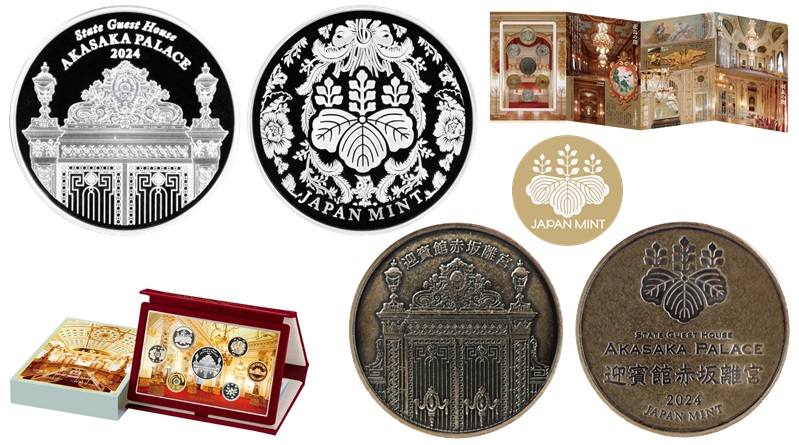
Both the brass and sterling silver medals depict the ornate front gates leading up to the driveway and official entrance. The brass medal includes the inscription 迎賓館赤坂離宮 (State Guest House, Akasaka Palace) placed along the upper rim. The reverse side includes the insignia of the Mint of Japan and additional text STATE GUEST HOUSE AKASAKA PALACE 迎賓館赤坂離宮 2024 JAPAN MINT. The silver medal includes the inscription State Guest House AKASAKA PALACE 2024 placed above the primary design. The reverse design includes an ornate combination of decorative elements of Akasaka and the Mint of Japan’s logo centred. The text JAPAN MINT is shown along the lower rim below the primary design.
| Item | Metal | Weight | Diameter | Quality | Mintage limit |
| Medal | Brass | 7.5 g. | 27 mm. | Oxidised BU | 40,000 |
| Medal | .925 Silver | 20 g. | 35 mm. | Proof | 10,000 |
Each version proof and BU set include the denominations currently in use, 500 yen bi-metallic (nickel-brass, cupronickel and copper), 100 yen cupro-nickel, 50 yen cupro-nickel, 10 yen bronze, 5 yen brass and a 1 yen aluminum coin. The Mint set is presented in a sealed blister-card format which includes illustrations and informative text about the Akasaka Palace. The proof sets are housed in a rigid Lucite case and presented in a red leather embossed folder and slip-case. For additional information, collectors are invited to consult the Mint of Japan’s partner distributors.

Download the Greysheet app for access to pricing, news, events and your subscriptions.
Subscribe Now.
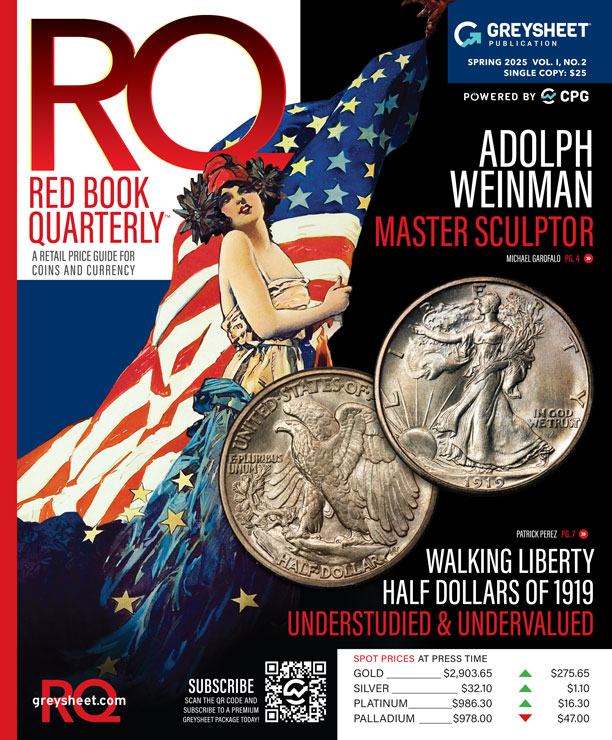
Subscribe to RQ Red Book Quarterly for the industry's most respected pricing and to read more articles just like this.
Author: Michael Alexander
Related Stories (powered by Greysheet News)
View all news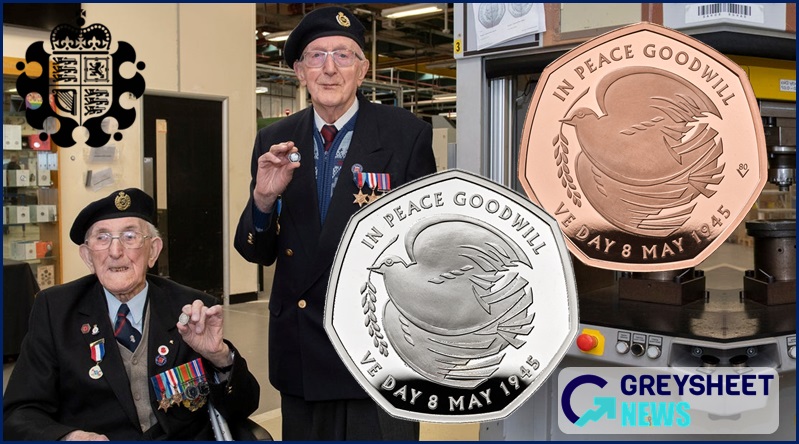
The Royal Mint remembers VE-Day with commemorative coins featuring a special design first seen in 1995.
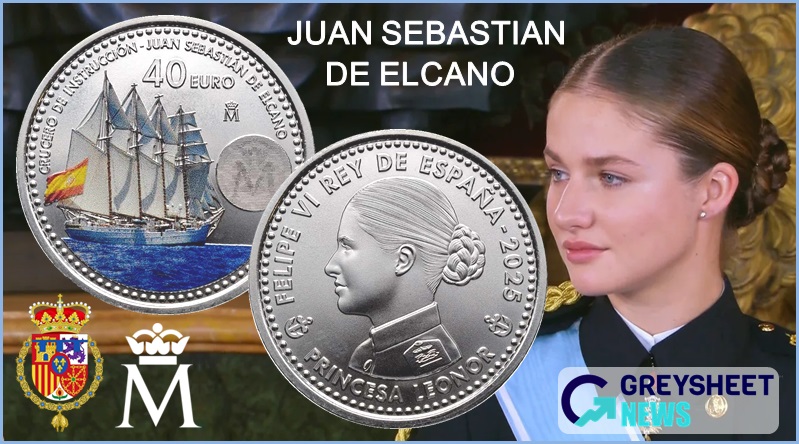
The FNMT - Real Casa de la Moneda launch their annual face-value silver commemorative coins.

The Monnaie de Paris continues their tribute to events leading up to the end of the Second World War.


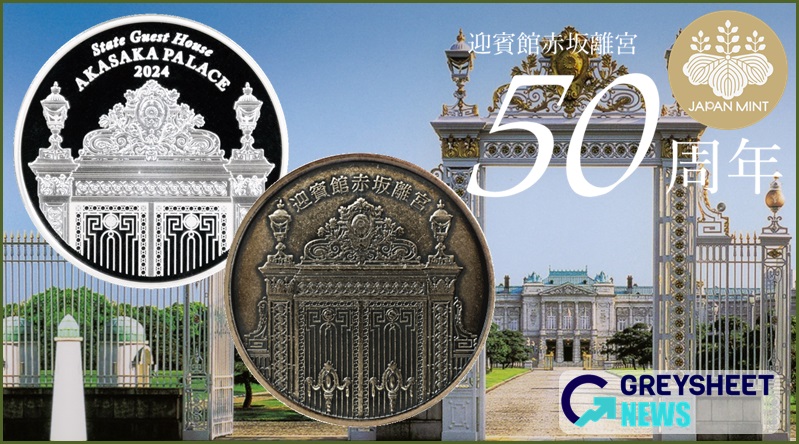






Please sign in or register to leave a comment.
Your identity will be restricted to first name/last initial, or a user ID you create.
Comment
Comments